How to Improve Worker Health and Safety Awareness in 4 Steps

Organizations should prioritize worker health and safety awareness to protect their employees. Every work environment comes with a particular set of risks, from slip-and-fall accidents to the dangers of working at heights. The best way to stay protected is to understand the safety expectations. When there’s clear communication of health and safety policies, this increases the likelihood of avoiding an injury in the workplace.
No worker wants to be responsible for an accident. With the proper health and safety awareness initiatives, your workforce will learn to mitigate any occupational risks or hazards. These initiatives can be as simple as onboarding new employees with clearly defined safety protocols. Existing employees should also attend routine health and safety awareness training, keeping their knowledge up to date.
Worker health and safety awareness equates to more rational action and behaviour in the workplace. The goal is to encourage everyone to remain alert to the safety of their surroundings. Let’s learn more about how to improve worker health and safety awareness in four simple steps:
Step #1: Provide worker health and safety awareness training.

Knowledge is an essential foundation to health and safety awareness in the workplace. When employees are informed, they can use their judgment to act safely and avoid risks. They can also advise colleagues to do the same, spreading a culture of health and safety across your workforce.
Start by providing Ontario health and safety training to every worker. These courses should extend to any authorized personnel on the job site, from junior employees to senior executives. Depending on the line of work, the courses can become more niche and industry-specific:
- WHMIS training is recommended for workplaces that handle hazardous materials.
- CPR and first aid training empowers your workers to respond to emergencies appropriately.
- Construction safety training is essential for anyone present in the construction site.
Along with the training courses, it’s important to encourage workers to come forward with their health and safety concerns. If a work situation seems unsafe, your employees should immediately report the issue to a safety consultant. By working together, both the employers and the employees can identify any hazards in proximity, ensuring safe conditions for everyone.
Step #2: Minimize workplace risks and hazards.

In some industries, there are occupational hazards that you cannot eliminate entirely. The best course of action is to minimize and mitigate these risks. For instance, identify any tripping hazards, motorized equipment, dangerous machinery, and physical activities that may cause harm to the workers. Consider whether there are safer alternatives available or if you can increase the security precautions around these activities.
Providing personal protective equipment plays an influential role in reducing accidents and injuries. As the employer, you should provide the necessary safety gear to protect your workforce, from helmets to harnesses. Ensure all workers understand the importance of wearing the equipment properly. Send the right message to your employees that you care about their health and safety.
Step #3: Set up routine health & safety meetings.

Don’t assume that all workers are aware of the safety protocols by default. Instead, arrange a regular health and safety meeting among your employees, highlighting certain risks and the expected responses. Make attendance mandatory because you want to ensure everyone receives the same brief on health and safety.
Use these meetings as an opportunity to retrain workers, share safety knowledge, and answer any questions. If new risks and hazards have emerged, the meeting is a great time to address concerns, formulate safety plans, and bring everyone up to speed. In some scenarios, your workforce may require additional health and safety training to understand the protocols better.
These health and safety meetings are more productive than you may think. It’s not that every employee needs a constant reminder of the standard workplace procedures. However, these team meetings can keep safety at the forefront of everybody’s minds as they carry out various responsibilities. Your staff will appreciate that their health and safety always remain a top priority.
Step #4: Examine workplace policies & processes.

Worker health and safety awareness is an ongoing process that your company should update regularly. Ask yourself whether the work processes and policies are as up-to-date and efficient as they could be. An example would be inspecting your equipment and machinery regularly. Also, check whether new technologies can streamline dangerous activities and minimize the risk of human error.
Many accidents and injuries occur from a deficiency in the work processes. Take a close look at how you work, where the most health and safety issues happen, and what your response can be. Although an accident-free workplace isn’t possible, you can monitor processes, modify activities, and modernize policies to maximize safety. Do what you can to minimize the dangers of your work environment.

